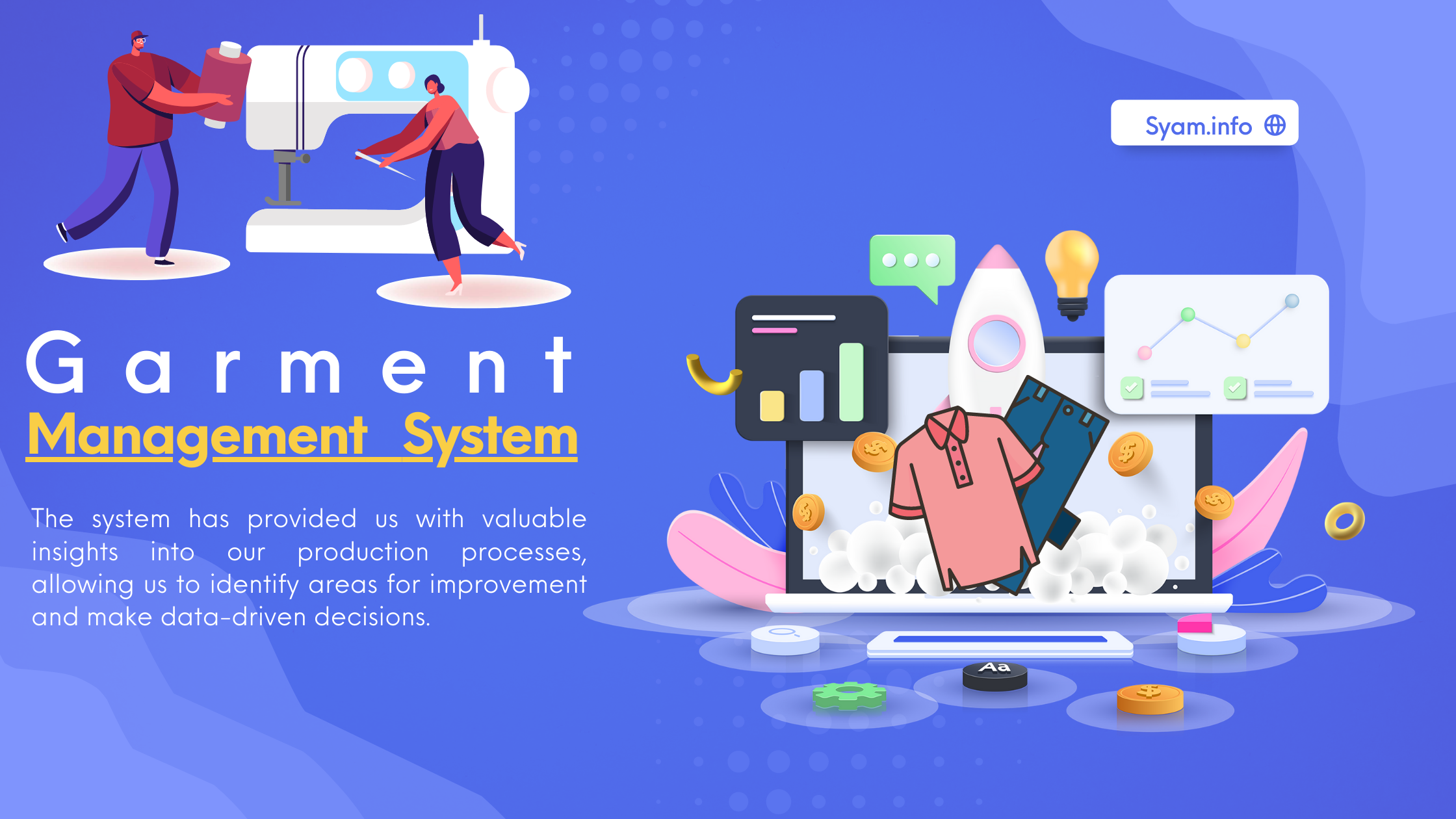
Syam
Web Developer & IT System Administrator

Garment Mangment System
As an IT system administrator in a garment factory, my primary goal is to ensure that the factory operates efficiently and productively. To achieve this, I decided to leverage my experience as a freelance web developer to create a system that would help manage the production, quality, planning, maintenance, and HR functions of the factory.
The system was developed in collaboration with colleagues in the production, time-study, HR, planning, and maintenance departments. It comprised several modules, including HR, planning, time-study, follow-up, and quality.
The HR module was designed to manage worker information and efficiency. It allowed HR members to add new employees and edit employee data. It also provided a search box to find employees quickly, and a feature for linking RFID cards with employees.
The planning module was used to create and allocate production orders based on the business plans. It allowed users to add new models, specify their details, and link them with stages.
The time-study department used the time-study module to add new stages, create stage groups, link stages with groups, and prepare stages for models.
The follow-up team utilized the follow-up module to gather productivity data and monitor worker production quantities. It enabled the user to scan the model, stage, and worker cards, and then enter the productive quantities using either a scanner device or a mobile phone. The system validated data for every transaction by comparing old records of the selected stage with the model quantity and the entire worker quantity.
The system also had features for re-allocating workers among production lines, listing recent transactions, and generating production reports. The reports section provided several useful reports for monitoring production and the factory workforce, including production reports, today's worker attendance report, hourly worker report, hourly stage report, worker effectiveness and accomplishments report, worker movement report, and model stage completion report.
The quality module was designed to generate a report for the final product. It allowed users to manage defects, map defects, and perform inspections. It also enabled users to generate a PDF file that included model details, AQL, and inspection results.
The system has had a significant impact on the efficiency and productivity of the factory. It has improved data accuracy and timeliness, facilitated better communication and collaboration across the departments, reduced lead times, and improved on-time delivery performance. It has also helped me to grow as a professional and gain valuable experience in developing and implementing software systems.
In conclusion, leveraging my experience as a freelance web developer and collaborating with my colleagues in the garment factory has enabled me to create a system that has had a significant impact on the factory's efficiency and productivity. By continually monitoring and improving these processes, we can increase productivity and efficiency, leading to better results for the business.
